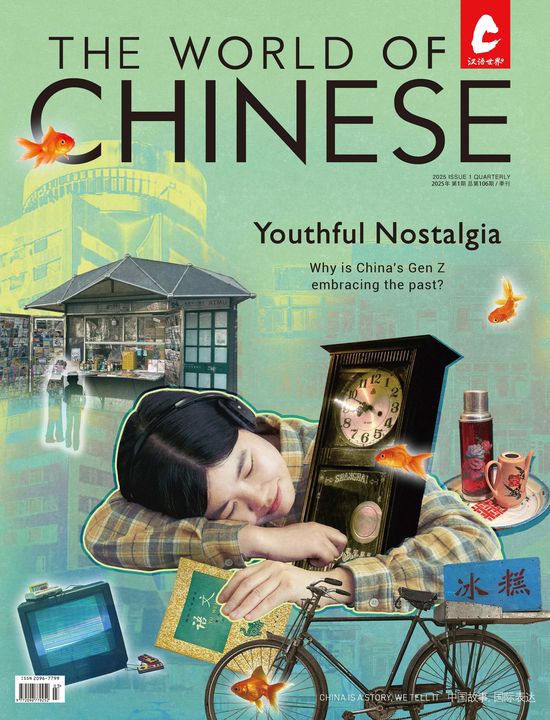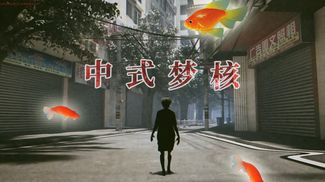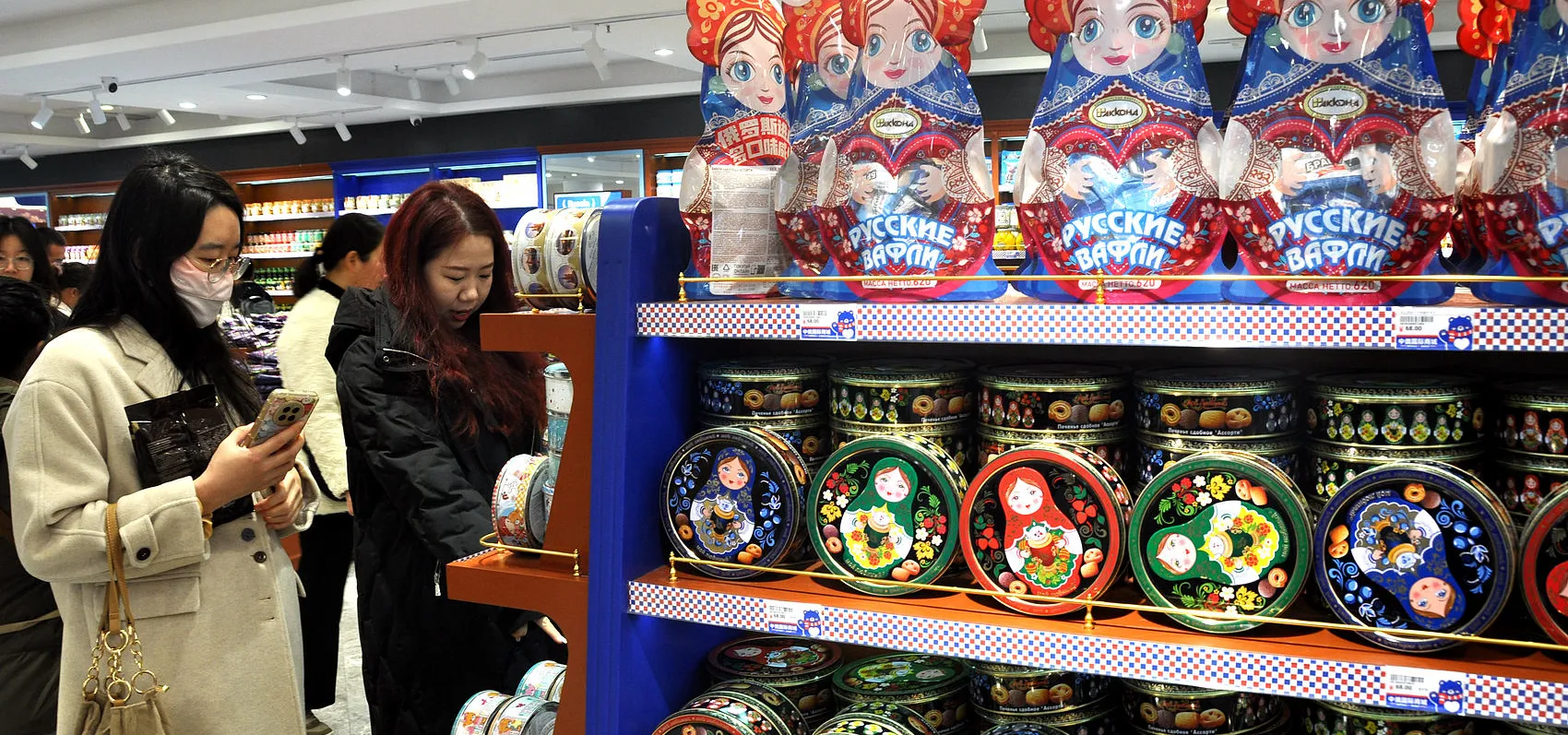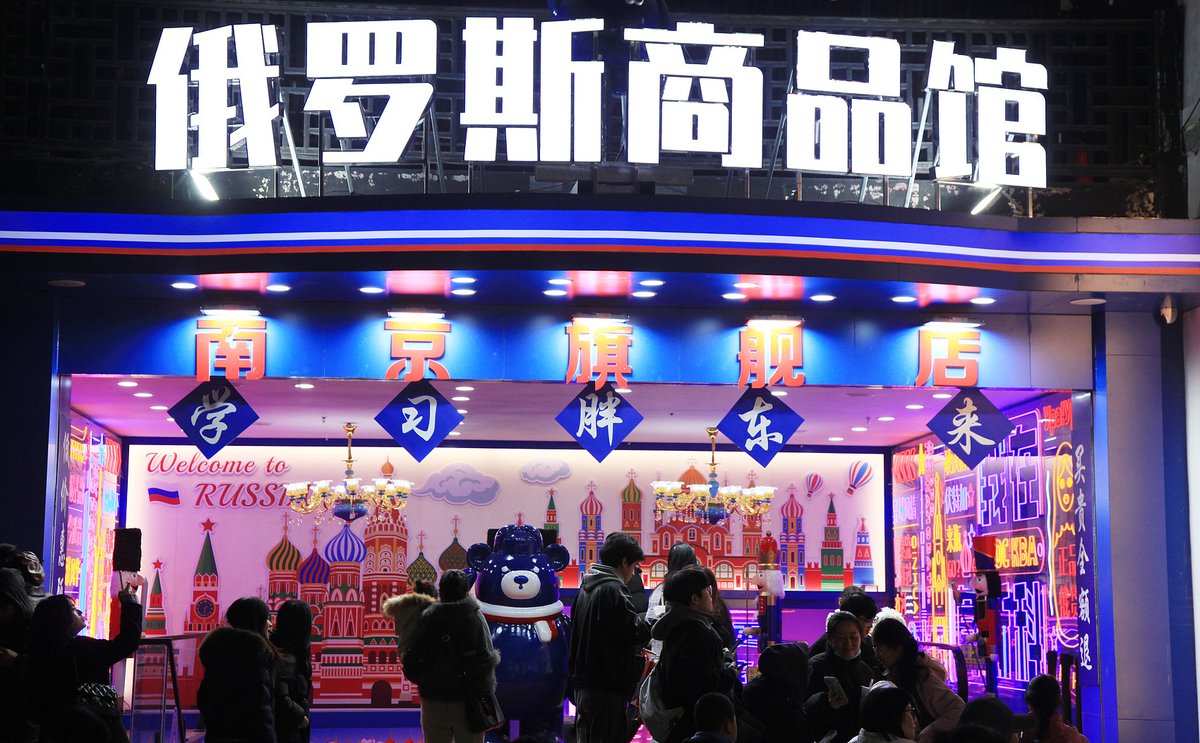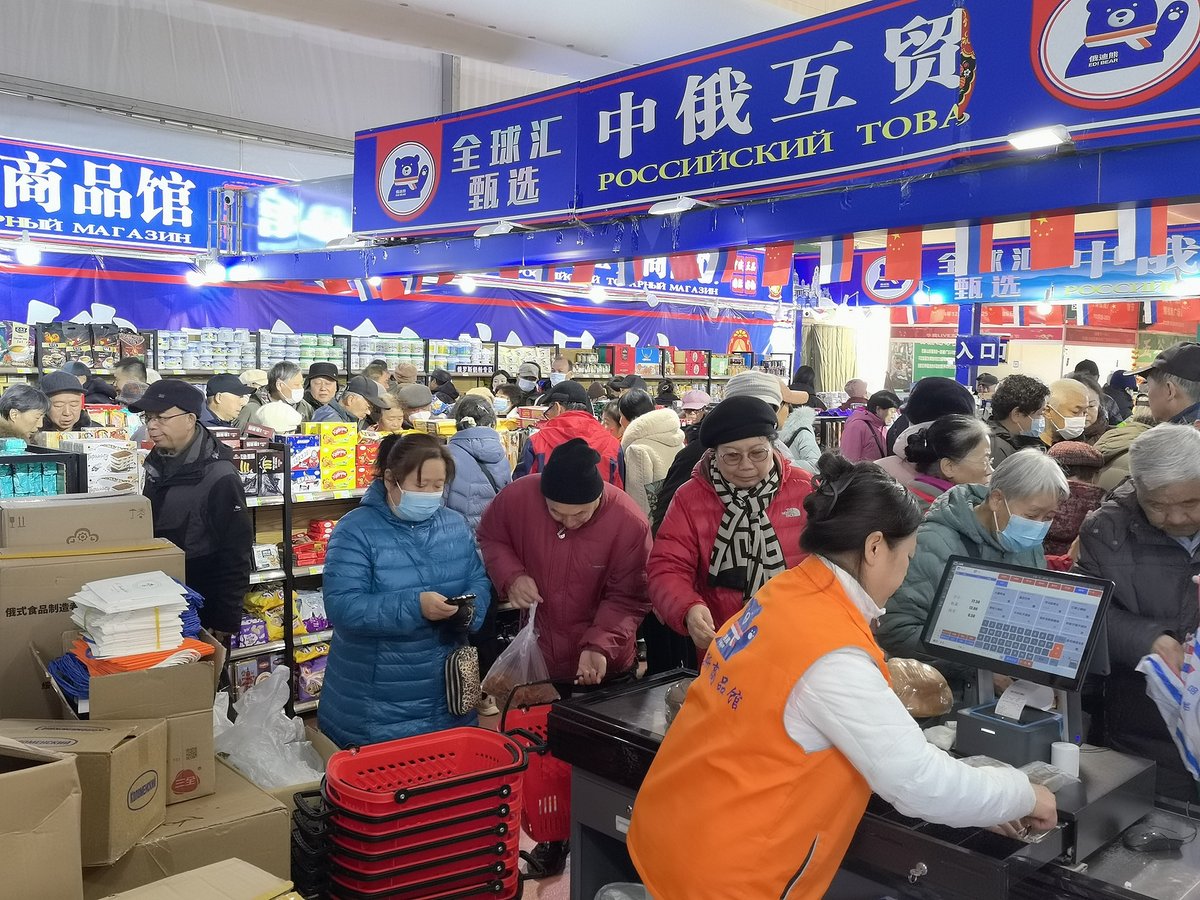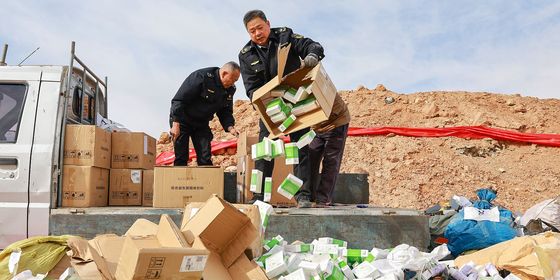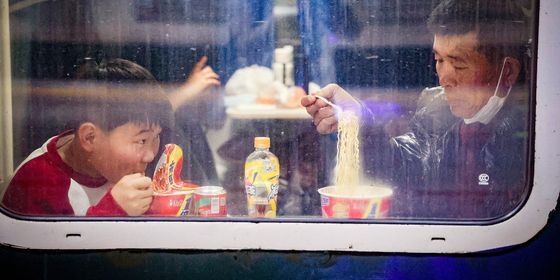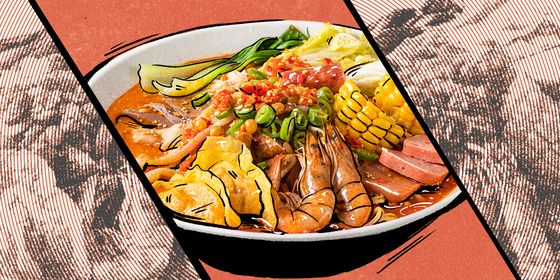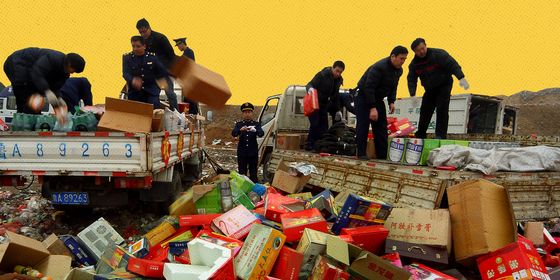After the opening of nearly 1,000 “Russian goods” stores in the country over the past year, consumers and authorities are beginning to question the true origin of their products
The smell of paint lingers in a Guangzhou shop, betraying the newness of the white-blue-red horizontal tricolor that acts as a backdrop and establishes the outlet’s Russian theme. With shelves packed with matryoshka dolls and vodka, it exudes an almost cinematic “Russian” authenticity, an ambiance underscored by Soviet-era melodies playing softly in the background.
When asked why Russian shops have multiplied across Guangzhou—the southern city now boasts 14 locations—the shop owner smiles enigmatically, saying only, “Maybe the wind blows too wild.”
The “wild winds” indeed carry change. Close to 1,000 such stores have sprouted across China in the past 12 months, according to the China enterprise database Tianyancha. Curious Chinese customers are flocking to them to browse a range of unfamiliar and “imported” products, implying intrinsic quality, emboldened by the renewed Chinese-Russian friendship established on the world stage over the past few years. However, the products offered in these shops might not be as “Russian” as many would assume from their exotic facades, following a series of consumer complaints that have led to official investigations.
Read more about the unique business landscape in China:
- The Memory Makers: The Rise of Professional Memoirists in China
- Ting Bu Dong? China’s Surging Demand for Foreign Language Tour Guides
- The Young Chinese Lottery Shop Owners in It to Win It
Wu Jialong, a 26-year-old self-proclaimed fan of Russian products, has visited Russian supermarkets in more than five Chinese cities. His passion for these goods stems from the nostalgia he feels for the USSR as depicted in Soviet films. Yet, his experiences with these stores have left him disappointed.
After purchasing a jar of supposedly authentic Russian honey in Guangzhou, Wu contacted a daigou (independent overseas shoppers who carry goods into the country) in Russia, only to learn the brand did not exist in the domestic market. After some further examination of customs declaration forms and brand registration documents, Wu discovered the honey was produced in Russia but solely for the Chinese market, likely by a Chinese-owned entity.
Wu’s findings echo broader concerns. In December, an investigation by Shanghai’s Market Administration Bureau uncovered that the “Russian National Pavilion” supermarket chain and many so-called Russian shops stock a surprisingly low percentage of imported goods while heavily marketing themselves as “authentic.” In January’s report of the investigation, law enforcement officials stated that “Many commodities, even made domestically, will be advertised as Russian but feature labels in Chinese; unless consumers look carefully, it will be difficult for them to determine whether it is imported or domestically-produced.” They added, “many product labels had the place of origin left blank.”
Furthermore, a local supervisor at a market featured in the investigation admitted that there is no explicit regulation in Shanghai stating that all products sold under the label “imported goods” must be entirely foreign-made.
The official account of the Russian Embassy in China issued a statement on the microblogging platform Weibo after the investigation was released, seemingly attempting damage control. “We firmly support the expansion of trade in agricultural and food products between Russia and China and warmly welcome the growing interest of local consumers in Russian goods. Our country produces a large number of high-quality products, and we are pleased to offer them to our Chinese friends,” reads the post.
The statement also cautioned Chinese consumers to exercise caution when purchasing Russian goods and specified that there are only eight officially recognized Russian goods stores in China—in Harbin, Shenyang, Shanghai, Chengdu, and Shenzhen. The others have not been established in cooperation with the Russian Federation’s commercial department, indicating that the quality of their goods cannot be vouched for.
Veronika Nikishina, general director of the Russian state-owned development institute, the Russian Export Center, also pledged to crack down on counterfeit Russian goods. She signed a collaboration agreement with the local government during the week-long “Made in Russia” festival in Shenyang, Liaoning province. According to Russian outlet RIA Novosti, Nikishina expressed hope that such anti-counterfeiting measures would be adopted in other Chinese provinces.
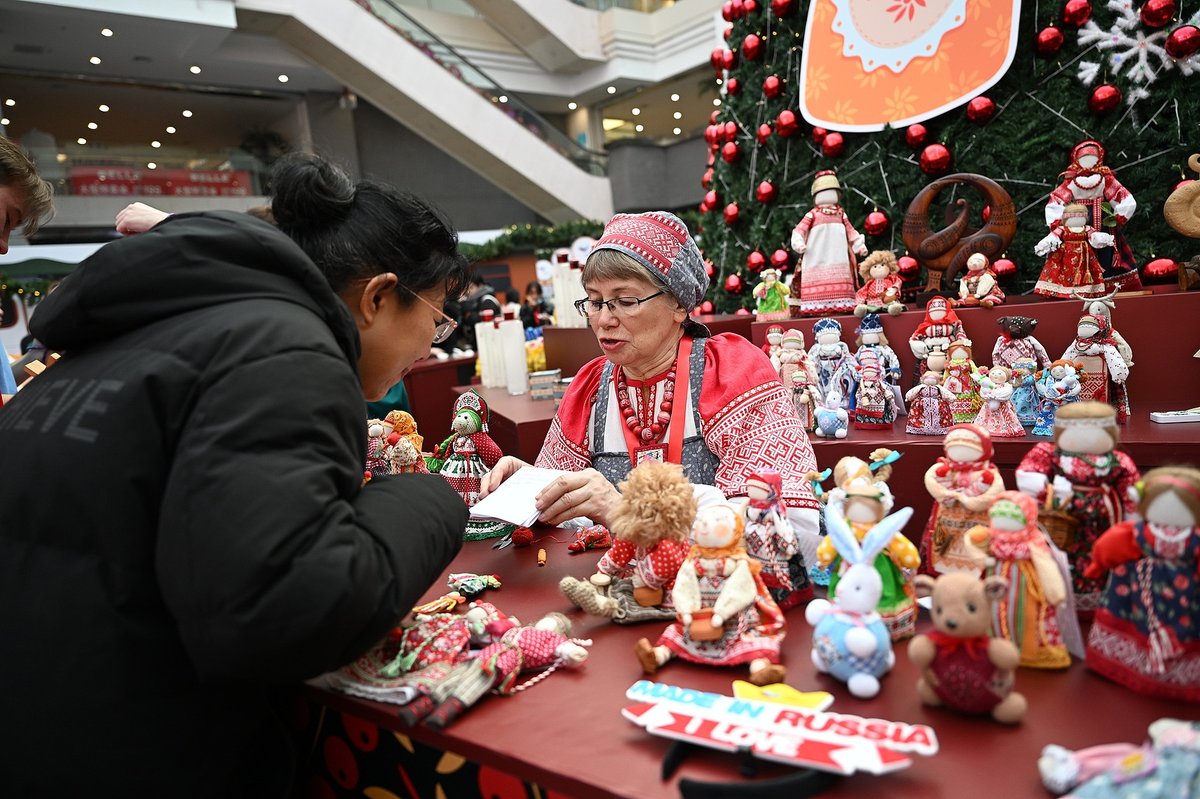
Many stores use some of the most recognizable Russian symbols to Chinese consumers—the melody of Russian songs like “Katyusha” constantly playing in the background, shelves filled with products adorned with Russian elements like matryoshka dolls and onion domes, all marked with Cyrillic writing—to create an authentic atmosphere (VCG)
Despite the active measures from authorities, it remains to be seen whether the enthusiasm for Russian goods will be sustained in China. The trend first started in early 2022, when Russian e-commerce platform Yandex Market collaborated with Chinese e-commerce giant JD to launch the “Russian National Pavilion” online store, generating over 6 million yuan in sales in the first week, according to media outlet South Reviews.
Although there is no direct evidence of any government sponsorship behind the virality, the Russian authorities’ promotion of Sino-Russian friendship and national branding has extended beyond traditional channels, reaching the social media sphere, according to Deng Haoxian, a Ph.D. candidate on Russia’s public-facing diplomacy at Hong Kong Baptist University.
“The Russian government might have paid a lot of money for the algorithm to push livestream sessions of Russian products to users. Even if they’re not interested in Russia or any related topics, they would still come across these livestreams,” says Deng.
He adds that the Chinese public’s favorable view of Russia, along with the popularity of Russian influencers on Chinese social media platforms—many with millions of followers—has also fueled the demand for Russian goods and Russia-themed stores.
Meanwhile, Xu, a long-time observer of import-export activities in Suifenhe, a border town near the Siberian city of Vladivostok, attributes the trend to increasing economic exchange between the two countries.
“After the pandemic, Suifenhe saw an influx of Russian goods, reflecting deepening Sino-Russian trade ties,” explains Xu, who agreed to speak to TWOC using only his last name. He noted that the success of Russian products in Harbin’s cultural tourism market likely inspired entrepreneurs to open Russian supermarkets elsewhere.
Shen Qiang (pseudonym), a shop owner in Shandong, also jumped on the trend in 2024 after seeing promoters of a Russian goods franchise calming profit margins of 40 to 60 percent on social media platforms. However, the reality has proven to be far tougher than the rosy picture painted online.
“In the first few months, customers rush to buy. But interest wanes, and the crowd thins. Combined with online skepticism about authenticity, demand decreases. Repeat customers take months to return,” he laments.
Shen admits that while over half of the goods sold at his store are authentically Russian, the rest are sourced from neighboring countries or manufactured domestically. “Fresh products like bread and sausages are challenging to import due to short shelf lives, so we produce some locally in China,” argues Shen, who has to balance authenticity with practicality.
Shen is not the only one struggling to stay afloat. According to Chengdu-based media outlet Red Star News, many Russian stores in the city have announced plans to close and have started clearance sales.
Whether store owners in China could salvage their image and establish authentic distribution channels in the future is yet to be seen. But for Russian goods enthusiasts, there are still ways to identify truly authentic products in the currently murky market, according to Shen: “Pay attention to the place of origin and the first two digits of the barcode—‘46’ means Russia, ‘69’ means China.”
